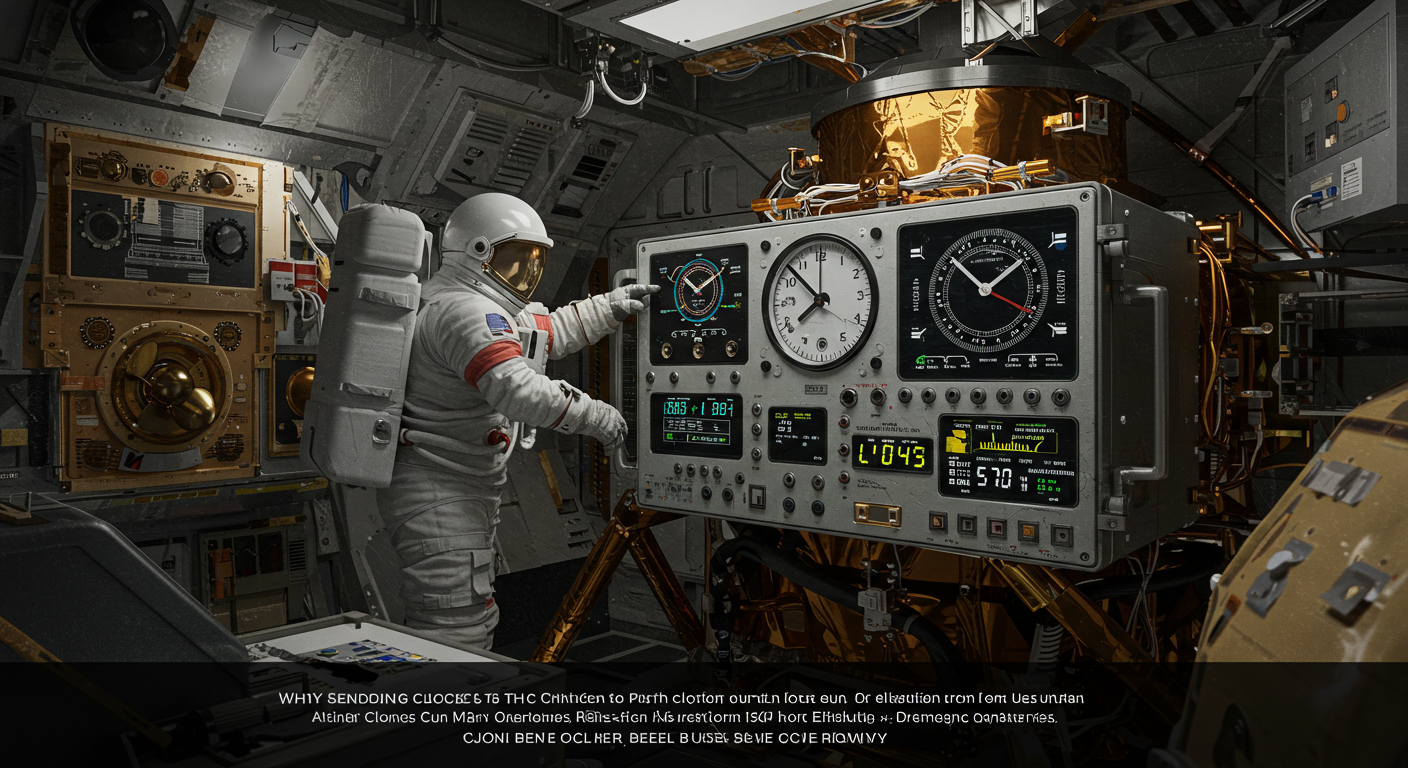Why Sending Clocks to the Moon is Crucial for Future Space Exploration
Understanding the Importance of Timing in Space Missions
In the context of space exploration, timing is not just a matter of schedule; it is a critical component that affects navigation, communication, and the safety of astronauts and equipment. Correctly synchronizing clocks across vast distances is imperative for the success of missions not only to the Moon but also to Mars and beyond. With missions becoming more ambitious, the need for precise timing systems becomes even more evident.
The Role of Atomic Clocks
Atomic clocks are the cornerstone of modern timing systems, providing unparalleled accuracy. These devices use the vibrations of atoms—usually cesium or rubidium—to maintain precise time. Their accuracy is essential for various functions, including GPS navigation, scientific experiments, and data transmission. By sending atomic clocks to the Moon, researchers can establish a stable time reference that is crucial for autonomous navigation and operational coordination.
Enhancing Lunar Navigation
Lunar navigation has historically been a challenge due to the Moon’s unique environment. The absence of an atmosphere and the intricate surface topography require precise tracking systems that operated seamlessly over vast distances. By deploying atomic clocks on the Moon, space agencies could create a lunar-based timing infrastructure that would facilitate accurate navigation for both orbiters and surface rovers. This is particularly vital as missions become more complex, involving multiple vehicles operating simultaneously on and above the lunar surface.
Coordinating Scientific Experiments
Time synchronization is essential for numerous scientific experiments. Many experiments involve taking time-stamped data from multiple locations. For example, if experiments are conducted to study lunar geology or to track dust particles and other forms of regolith, accurate timing allows researchers to correlate findings from different instruments. By sending synchronized atomic clocks to the Moon, scientists can gather high-quality data that enhances our understanding of the lunar environment.
Enabling Deep-Space Communication
Future missions to Mars and other celestial bodies will require the transfer of vast amounts of data back to Earth. Efficient communication networks will be necessary to handle this data. Coordinated timing allows for optimal signal transmission, reducing latency and errors. Launching atomic clocks on the Moon can serve as additional nodes in a lunar communication network, improving the overall infrastructure essential for deep-space missions.
Supporting Advanced Technologies
The use of advanced technologies like mobile bases and autonomous rovers will fundamentally transform lunar exploration. These systems depend on precise timing for data collection, navigation, and operation. By deploying highly accurate clocks on the Moon, we pave the way for sophisticated autonomous systems that can conduct operations without requiring direct input from Earth, thus saving time and resources in critical situations.
Preparing for Mars Exploration
Mars missions are expected to follow shortly after renewed lunar exploration efforts. The challenges of timing on Mars are even greater due to its distance from Earth. By launching and testing atomic clocks on the Moon, space agencies can collect valuable data that informs the timing needs for Martian missions. This leads to advancements in technology, infrastructure, and operational strategies that will underpin human and robotic exploration of Mars.
Time as a Payload for Future Missions
As mission profiles evolve, so do payload requirements. Incorporating atomic clocks into future lunar missions could also lead to innovations in space-based power distribution systems. A precise timing infrastructure would enable effective coordination between solar arrays and energy storage frameworks, optimizing energy use across lunar habitats.
Potential for Lunar Infrastructure Development
Creating a lunar timing network with clocks on the Moon could support a broader array of infrastructures, such as lunar bases or research stations. Just as terrestrial GPS has impacted navigation on Earth, a comparable lunar system can support future construction and operations. The concept is similar to terrestrial networks—one reliable time reference can enhance performance and efficiency significantly.
Securing Safety for Astronauts
Safety is paramount in space missions, especially when humans are involved. An accurate timing system will serve as a backstop for emergency situations, ensuring that all systems theoretically resist human error as much as possible. With atomic clocks, spacecraft, rovers, and habitat modules can react in real-time to evolving situations, enhancing the safety and wellbeing of crews working on the Moon.
Integration into the International Space Community
As multiple nations and organizations aim to establish a foothold on the Moon, a unified timing standard becomes a shared necessity. By launching atomic clocks to the Moon, countries can collaborate on lunar exploration while ensuring their systems remain compatible. This collaboration opens opportunities for more effective partnerships in scientific pursuits and resource exploration.
Future Data Collection and Research Initiatives
The implications for research on changing lunar properties and geological events are noteworthy. With precise timestamps and configurations, scientists could conduct longitudinal studies on lunar activities and their effects on equipment. This data is crucial not only for understanding the Moon but also for preparing for long-term habitation.
Economic Considerations
While deploying atomic clocks may seem costly initially, the long-term benefits far outweigh these investments. Having a sustainable lunar infrastructure will ultimately reduce costs, expedite mission timelines, and enhance safety—ensuring profitability for future endeavors. Efficient timekeeping allows for better resource management and operational efficiency, fostering a viable lunar economy.
Conclusion
The role of precise timing in advancing space exploration cannot be understated. Deploying atomic clocks to the Moon serves as the foundation for efficient navigation, seamless communication, and unparalleled scientific inquiry. As we stand on the brink of a new era in space exploration, one thing is clear: sending clocks to the Moon is not an option; it is a necessity for humanity’s endeavors in reaching the stars.



